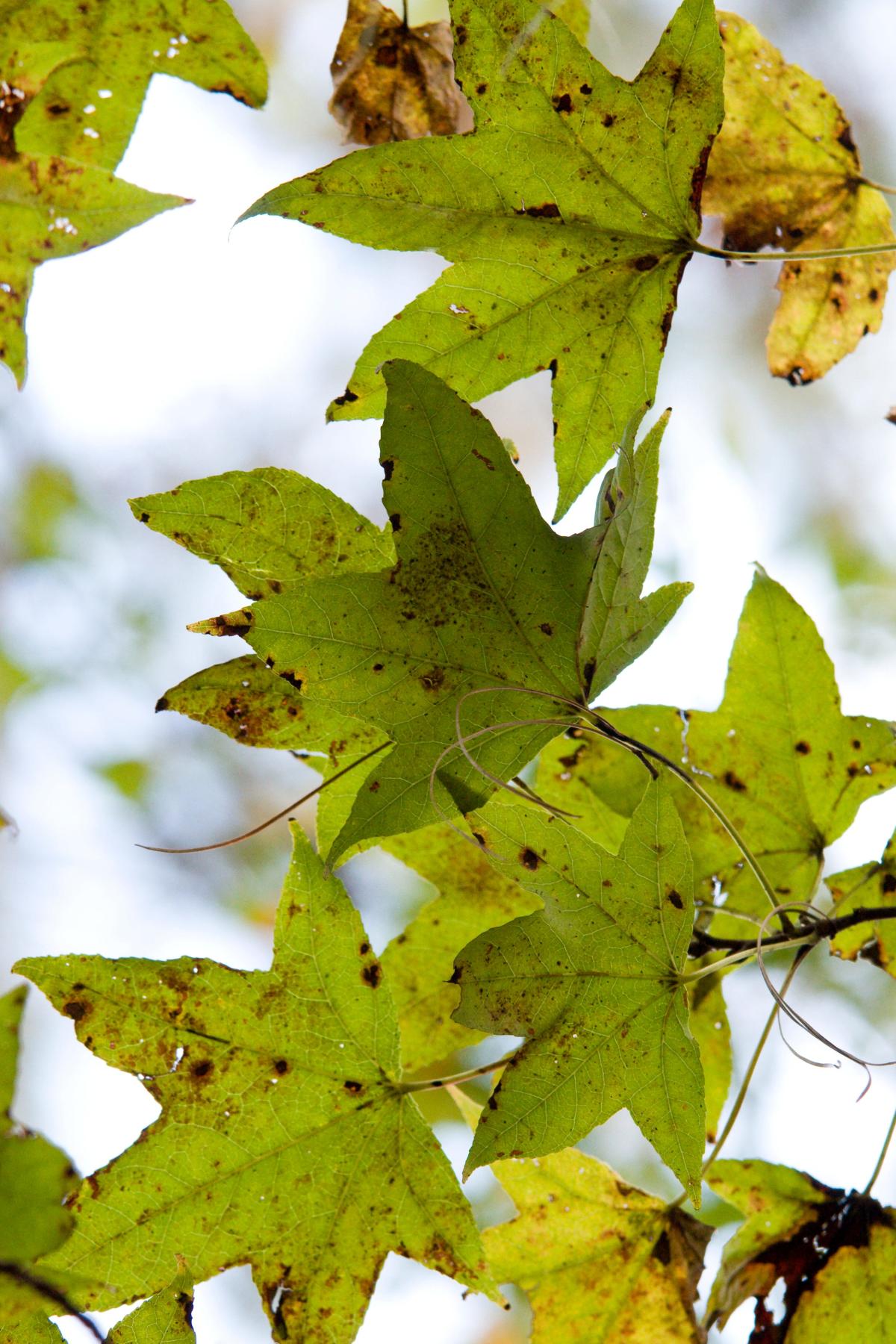
Fall in the Florida garden can sometimes feel and look like spring. We had a week of cool weather earlier in the fall, but then a return to temperatures in the 80s, with nights in the 70s. The forecast is calling for cool weather again.
In August, we usually have a drought, before we get tropical storm rains. Florida plants have to be tough and adaptable. Some deciduous plants lost their leaves in the drought and the brief cool spell and then put out spring blooms when rains returned. They’ll lose the new leaves again with cold weather and any fruit that set will be lost. We have to grow fruit trees with low cooling hours, but they can get confused by cool spells alternating with warm spells. Usually, there are enough dormant flower buds for another bloom in the spring.
Insects and diseases love the burst of tender new leaves. Gardeners are noticing holes and deformed leaves and dark spots. If the plant is a deciduous perennial, spotted deformed leaves will fall with cool weather and can just be raked up and disposed of. This will prevent reinfection of the new leaves in spring. If it’s impossible to rake up the leaves, a fresh layer of mulch will help keep diseases from splashing up on the plant.
Advertisement
Advertisement
I’m seeing butterflies in the garden and butterfly and moth caterpillars are active leaving holes. Sometimes they’ll eat so much of the plant, you’ll think the plant won’t survive, but it will. Native plants have evolved with the insects and birds as part of a cycle of life. I do have to control the lubber grasshoppers, though, as I have had them eat the heart out of expensive bulbs.
Practice Integrated Pest Management, which starts with hand removal. This website will give you more information: https://gardeningsolutions.ifas.ufl.edu/care/pests-and-diseases/pests/management/integrated-pest-management/. You can also do a search on University of Florida Institute of Food and Agricultural Sciences website at https://ifas.ufl.edu/. Just put the plant and symptom in, for example, “cabbage leaf spots.” If you put that in the general search on your computer, you’ll get the paid advertisement websites first, so use the University of Florida’s IFAS website above.
If you are one of the gardeners who like fall mums, move them up into a larger pot after you buy them. Remember to loosen the roots as you replant them. Water at soil level and put them in the shade on hot sunny days. They like sun on cool days. As the blooms fade and turn black, remove them so that other buds can develop. After you use them for display, they can be planted in the flower border. They’ll go dormant in freezes and they’ll usually bloom again in the spring and can be cut back to bloom again in the fall. I have found the daisy-shaped blooms work best for treatment as perennials and may even attract pollinators.
Fall and winter in the Florida Garden can be one of the best times to garden.
Advertisement
Advertisement
Brenda Daly is a Master Gardener volunteer with the Duval County Extension Service and the University of Florida/IFAS. For gardening questions, call the Duval County Extension Office at (904) 255-7450 from 9 a.m. to noon and 12:30 to 3:30 p.m. Monday-Friday and ask for a Master Gardener volunteer.
This article originally appeared on Florida Times-Union: Fall gardening in Florida
EMEA Tribune is not involved in this news article, it is taken from our partners and or from the News Agencies. Copyright and Credit go to the News Agencies, email news@emeatribune.com Follow our WhatsApp verified Channel




